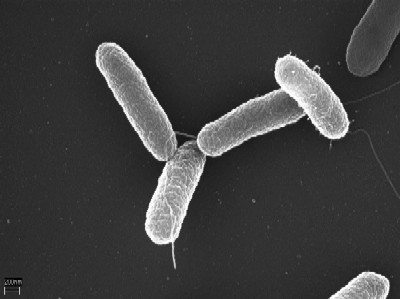 Microbial Ecology
Microbial Ecology
Our research is focussed on understanding the role of microbes in important ecosystem functions such as biogeochemical cycling, nutrient availability and GHG emission and mitigation. We are currently investigating plant-microbial interactions in the rhizosphere using state-of-art transcriptomic and metabolomic technologies in collaboration with the University of Manchester.
We are also examining interactions between microbial communities and their impact on ecosystem functioning. For example, we are investigating the role of fungi and bacteria on shaping one another’s diversity. Understanding the adaptability of microbes to environmental perturbations is important for maintenance of ecosystem function and long term sustainability. We are examining the response of microbes to various environmental stressors such as heavy metal, pesticide and fertiliser pollution, land use change etc. A range of sophisticated molecular and stable isotope tools have been developed and applied to study the structural (bacteria, fungi and archaea) and function (groups involved in C, N and S cycling) groups and their ecological niches.
Current Projects
- 2006-2009: Transcriptomic response of Pseudomonas to plant nutritional stresses. Funding agencies: NERC, UK (In collaboration with Manchester University).
- 2008-2011: How does change in land-use between set-aside and cropping impact soil biodiversity and function? Funding Agency: DEFRA (in collaboration with HRI Warwick, CEH Oxford).
- 2005-08: Response of Pseudomonas to plant nutritional stress at transcriptomic and metabolomic levels. Funding BBSRC.
- 2006-2011. Impact of soil management practices on soil microbial community and processes (Work Package 3.3: Management of soil). Funding Agencies: RERAD,
- 2007-2010: Effect of land use change on methanotrophic communities (Metagenomic approach). PI. Funding: MDT
Group Member:
- Dr. Brajesh K Singh
- Dr. Herve Sanguine (Postdoc fellow, based at Manchester University)
- Mrs Agnieszka Zysko (PhD student)
- Mr Allan Sims (Research staff)
- Ms Nadine Thomas (Research staff)
Collaborators
- Dr. Michael Kertesz (University of Manchester),
- Dr. Zilli He and Prof Joe Zhou (University of Okhalama, USA).
- Prof Jim Prosser (University of Aberdeen),
- Prof Peter Young (University of York),
- Drs Tim Daniel and Bryan Griffiths (SCRI, Dundee).
- Dr. Naoise Nunan (INRA, France),
- Dr Jim McNicol (BIOSS, Dundee).
Selected Publications
- Singh, B.K., Nunan, N., Ridgway, K.P., McNicol, J., Young, J.P.Y., Daniell, T.J., Prosser, J., and Millard, P. (2008). Relationship between assemblages of mycorrhizal fungi and bacteria on grass roots. Environmental Microbiology. 10: 534-541.
- Schamalenberger, A., Hodge, S., Bryant, A., Hawkesford, M. J., Singh, B. K., and Kertesz, M.A. (2008). The role of Variovorax and other Commanadaceae in sulfure transformation by microbial wheat rhizosphere communities exposed to different sulphur fertilisation regimes. Environmental Microbiology,10: 1486-1500.
- Macdonald, L, Singh, B.K., Thomas, N, Brewer, MJ, Campbell, CD, Dawson, LA. Microbial DNA profiling by multiplex terminal restriction fragment length polymorphism for forensic comparison of soil and the influence of sample condition. Journal of Applied Microbiology, 105: 813-821.
- Singh, B.K., Dawson, L., Macdonald, C. and Grime, S. (2008). Impact of biotic and abiotic interaction on soil microbial communities and functions: A field study. Applied Soil Ecology, In press.
- Singh, B.K., Tate, K.R., Kapadia, G., Hedley, C.B., Macdonald, C.A., Millard, P. and Murrell, J.C. (2007). Effect of afforestation and reforestation of pastures on the activity and population dynamics of methanotrophic bacteria. Applied and Environmental Microbiology. 73: 5153-5161.
- Singh, B.K. and Tate, K.R. (2007).Biochemical and molecular characterization of methanotrophs in soil from a pristine New Zealand beech forest. FEMS Microbiology Letters 275: 87-97.
- Macdonald, C., Singh, B.K., Campbell, C., Horsewell, J. and Spier, T., (2007) Long-term exposure to Zn-spiked sewage sludge alters soil community structure. Soil Biology & Biochemistry. 39: 25-76-2539.
- Singh, B.K., Munro, S., Potts, J and Millard (2007)Influence of grass species and soil type on rhizosphere microbial community structure in grassland soils. Applied Soil Ecology. 36: 147-155.
- Tate, K. D.J. Ross, S. Saggar, C.B. Hedley, J. Dando, B.K. Singh and S.M. Lambie (2007). Methane uptake in soils from Pinus radiata plantations, a reverting shrubland and adjacent pastures: Effects of land-use change, and soil texture, water and mineral nitrogen. Soil Biology and Biochemistry. 39:1437-1449. Singh, B.K. and Thomas, N. (2006). Multiplex-Terminal Restriction Fragment Length Polymorphism. Nature Protocol. 1, 2428-2433.
- Singh, B.K., Nazaries, L., Munro, S., Anderson, I. and Campbell, C. (2006). Use of multiplex terminal restriction fragment length polymorphism for rapid and simultaneous analysis of different components of the soil microbial community. Applied and Environmental Microbiology 72, 7278-7285.
- Nunan, N., Singh, B.K., Reid, E., Ord, B., Papert, A., Squire, J., Prosser, J., Wheatley, R., McNicol, J., and Milard, P. (2006). Sheep-urine-induced changes in soil microbial community structure. FEMS Microbiology Ecology. 56, 310-320.
- Singh, B.K., Reid, E., Ord, B., Potts, J., and Milard, P. (2006). Investigating microbial community structure in soils by physiological, biochemical and molecular fingerprinting methods. European Journal of Soil Sciences. 57, 72-82.
- Nunan, N., Daniel, T.J., Singh, B.K., Papert, A., McNicol, J. and Prosser, J.I., (2005) Links between plant and rhizoplane bacterial communities in grassland soils, characterized using molecular techniques., Applied and Environmental Microbiology, 71, 6784-6792.
- Singh B. K. (2005). Microbial diversity: progress and important knowledge gaps. American Society of Microbiology News, 71, 210-211.
- Singh, B.K., Millard, P., Whiteley, A. and Murrell, J.C. (2004). Unravelling rhizosphere - microbial interactions: opportunities and limitations., (2004) Trends in Microbiology, 12, 386-393.
|
Updated: 23 Jan 2024, Content by: BS
|

